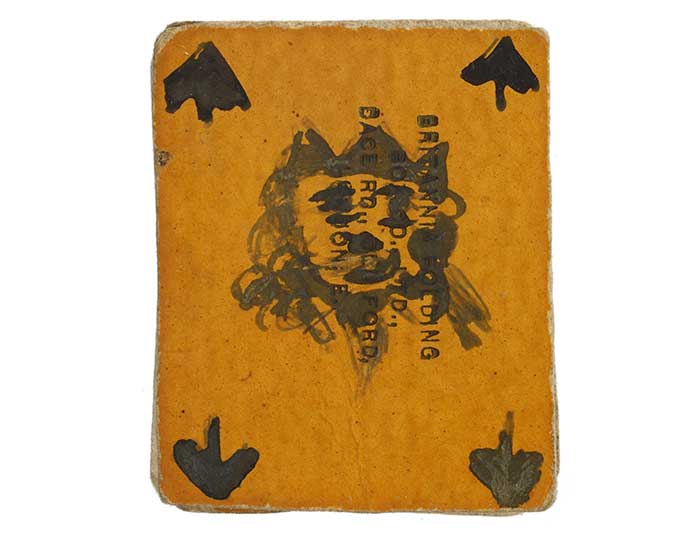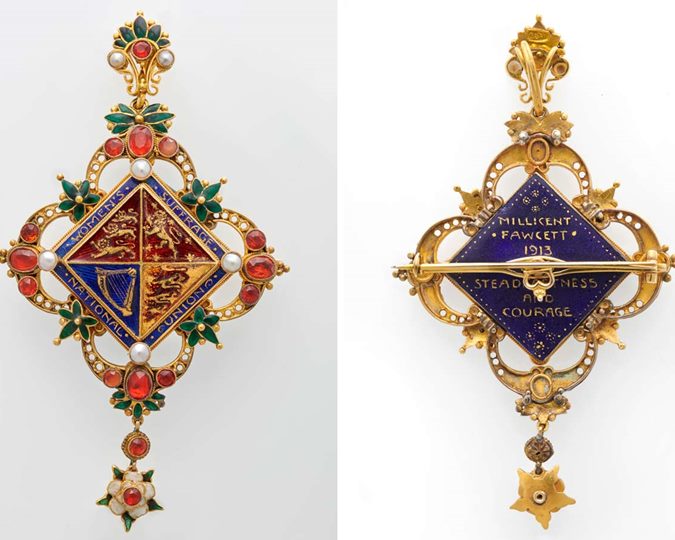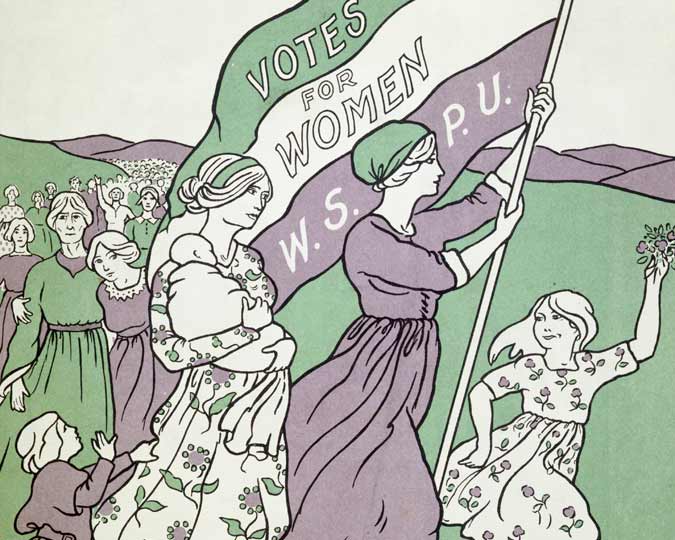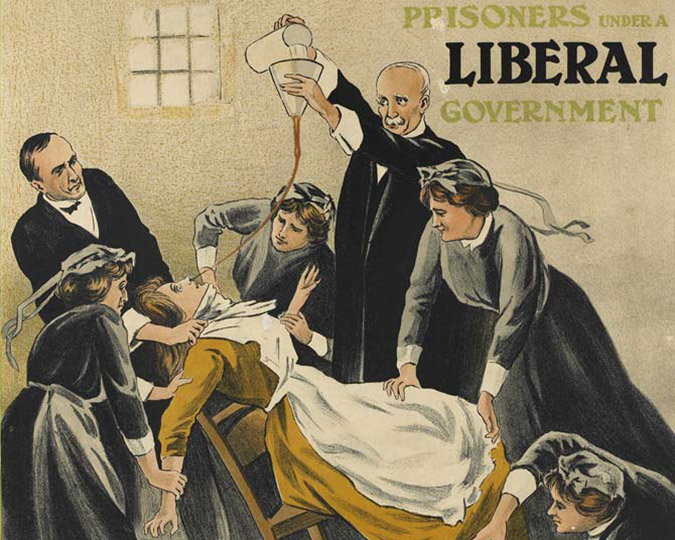Did you know that the Museum of London has one of the world’s best and biggest collections of material on the militant ‘Votes for Women’ campaign?
That’s right, we have all the fascinating facts when it comes to who the Suffragettes were, what they did, and what they achieved. Read on to find out more about how the Suffragettes shaped history, and see some of the objects we have in the collection telling their story!
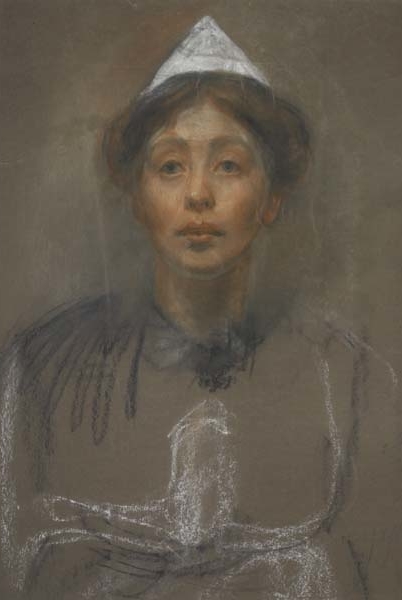
Drawing; pastel and charcoal - Sylvia Pankhurst, self-portrait
In this self-portrait, Sylvia Pankhurst shows herself wearing prison dress.
Who were the Suffragettes?
The Suffragettes were part of the ‘Votes for Women’ campaign that had long fought for the right of women to vote in the UK. They used art, debate, propaganda, and attack on property including window smashing and arson to fight for female suffrage. Suffrage means the right to vote in parliamentary and general elections.
Who started the Suffragette movement?
Emmeline Pankhurst, her daughters Christabel, Sylvia and Adela Pankhurst, and a small group of women based in Manchester founded the Women’s Social and Political Union (WSPU) in 1903.
The WSPU aimed to ‘wake up the nation’ to the cause of women’s suffrage through ‘Deeds Not Words’. This was the beginning of the Suffragette movement as we know it.
What did the Suffragettes do?
In 1906, the Women’s Social and Political Union relocated their headquarters to London. This transformed the suffrage movement, and for the next 8 years, the Suffragettes' fight to win the vote became a highly public and, at times, confrontational struggle.
Both salaried and volunteer office staff at the WSPU organised fund-raising events, demonstrations and produced the weekly newspaper Votes for Women, which had a circulation of 22,000 by 1909, to raise awareness of the suffrage cause. The WSPU had 90 branches across the United Kingdom but London remained the chief area of support with 34 local offices.
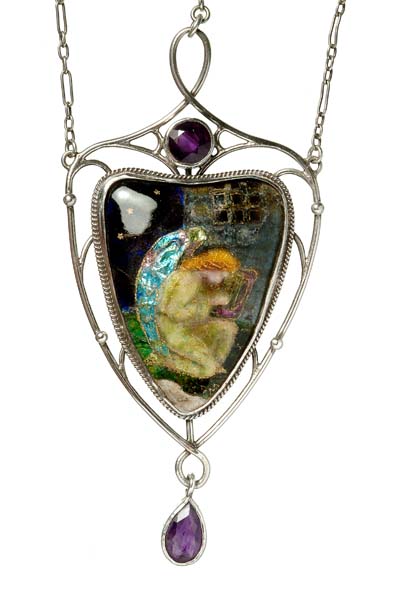
Ernestine Mills Pendant
A silver pendant made by Ernestine Mills to commemorate the release from Holloway prison of Louise Mary Eates, Suffragette and Secretary of the Kensington WSPU.
Where did the Suffragettes protest?
By basing its headquarters in London meant the Suffragettes could protest where the government was situated. They maintained a constant presence in Whitehall, petitioning Downing Street, heckling MPs and chaining themselves to government buildings.
The Suffragettes also targeted major works of art and London landmarks. On 4 March 1914 Mary Richardson entered the National Gallery and inflicted seven 'wounds' across Velázquez's painting 'The toilet of Venus’.
Richardson's slashes were deliberately aimed at the torso of the nude Venus. In her defence she declared ‘I have tried to destroy the picture of the most beautiful woman in mythological history as a protest against the Government for destroying Mrs. Pankhurst who is the most beautiful character in modern history’.
What were the largest Suffragette processions?
Women's Sunday in June 1908 was known as the first 'monster meeting' to be held by the WSPU. It brought Suffragettes from all over the United Kingdom to march in seven different processions through Central London to Hyde Park. The highly choreographed demonstration attracted a crowd of up to 300,000. They were drawn by the spectacle of the delegates dressed in the Suffragette purple, white and green colours (otherwise known as the tricolour) and carrying over 700 banners.
The Coronation of George V in 1911 inspired the WSPU to organise its own spectacular coronation pageant, which exceeded the numbers who attended on Women’s Sunday. The four-mile Suffragette Coronation Procession through central London culminated in a rally at the Royal Albert Hall and involved over 60,000 delegates dressed in national and historical costume.
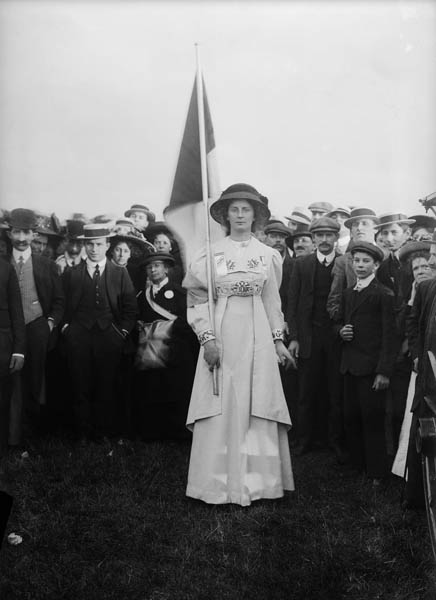
Charlotte Marsh at a Suffragette rally
The Suffragette leader Charlotte Marsh poses for the photographer Christina Broom, before a male crowd assembled for a rally at Hyde Park in June 1910.
How were the Suffragettes treated by the government?
As the campaign became increasingly militant, over a thousand Suffragettes, including Emmeline Pankhurst and her daughters Christabel, Sylvia and Adela, received prison sentences for their actions. Many Suffragettes were sent to Holloway Prison in North London where they protested against the refusal to treat them as political prisoners by going on hunger strike. In response, the government introduced a policy of force-feeding.
What was the Cat and Mouse Act?
When force-feeding failed, the British government passed a law that was referred to by the Suffragettes as the Cat and Mouse Act in 1913. This was a law that allowed hunger-striking Suffragettes to be released from prison when they were weakened, but only 'on licence'.
Once their health have been restored, or they reappeared in public taking part in militant Suffragette actions, they would be re-arrested and returned to prison. This idea of the law allowing for prisoners to be let go only for the police to catch them again, just as a cat plays with a mouse, inspired the name.
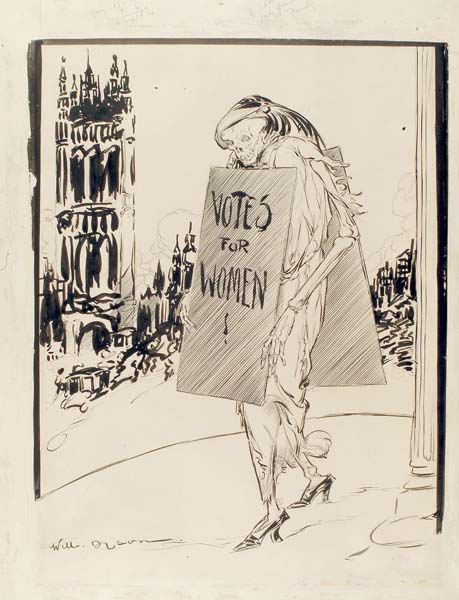
'The New Advocate' - an ink drawing by William Dyson
This drawing by William Dyson was published on the Daily Herald’s front page following Emily Wilding Davison’s death in 1913.
Did the Suffragettes win the vote?
The outbreak of the First World War brought an immediate suspension of militant action and public protest as the Suffragettes threw themselves into supporting the war effort. The end of militancy also resulted in the release of all Suffragette prisoners. militant efforts also saw the end of Suffragette hunger striking in Britain.
The Women's Social and Political Union had not succeeded in achieving the vote, but its campaigning style eased the way for women to take a more active and public role in society during the war. It was this role that was acknowledged with the granting of the parliamentary vote to a limited number of women over the age of 30 in 1918.
Want to find out more about the Suffragettes?
There’s plenty more to discover with the Museum of London:
Votes for Women: virtual exhibition
Delve into the fascinating stories of seven women via powerful photographs and personal objects representing their dedication to the Suffragette campaign.








